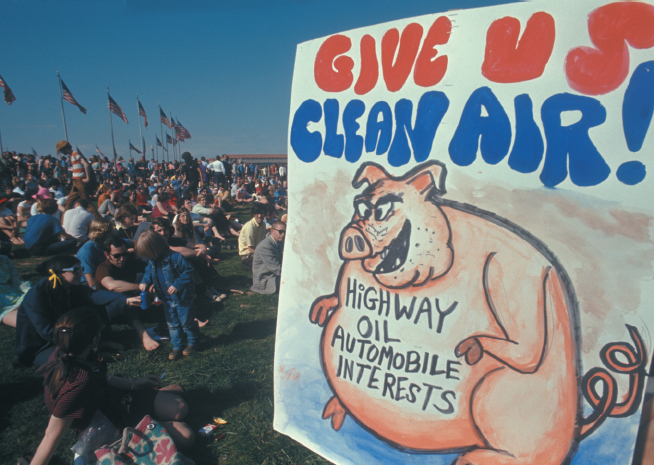Responding to Environmental Concerns
Printed Page 862
Section Chronology
The oil crisis dovetailed with a rising environmental movement, which was pushing the government to conserve energy and protect nature and human beings from the hazards of rapid economic growth. Like the conservation movement born in the Progressive Era (see "Roosevelt and Conservation" in chapter 21), the new environmentalists sought to preserve natural areas for recreational and aesthetic purposes and to conserve natural resources for future use. Especially in the West, the post–World War II explosion of economic growth and mushrooming population, with the resulting demands for electricity and water, made such efforts seem even more critical.
The new environmentalists, however, went beyond conservationism to attack the ravaging effects of industrial development and technological advances on human life and health. Biologist Rachel Carson drew national attention in 1962 with her best seller Silent Spring, which described the harmful effects of toxic chemicals such as the pesticide DDT. The Sierra Club and other older conservation organizations expanded their agendas, and a host of new groups arose. Millions of Americans expressed environmental concerns on the first observation of Earth Day in April 1970.
CHAPTER LOCATOR
What liberal reforms were advanced during the Kennedy and Johnson administrations?
How did the civil rights movement evolve in the 1960s?
What other rights movements emerged in the 1960s?
What were the goals of the new wave of feminism?
How did liberalism fare under President Nixon?
Conclusion: What were the achievements and limitations of liberalism?
 LearningCurve
LearningCurve
Check what you know.

Responding to these concerns, Nixon called “clean air, clean water, open spaces … the birthright of every American” and urged Congress to “end the plunder of America’s natural heritage.” In 1970, he created the Environmental Protection Agency (EPA) to enforce environmental laws, conduct research, and reduce environmental and human health risks from pollutants. He also signed the Occupational Safety and Health Act, protecting workers against job-related accidents and disease, and the Clean Air Act of 1970, restricting factory and automobile emissions of carbon dioxide and other pollutants. Environmentalists claimed that Nixon failed to do enough, pointing particularly to his veto of the Clean Water Act of 1972, which Congress overrode. Yet his environmental initiatives surpassed those of previous administrations.
Environmental Protection Agency (EPA)
 Federal agency created by President Nixon in 1970 to enforce environmental laws, conduct environmental research, and reduce environmental and human health risks from pollutants.
Federal agency created by President Nixon in 1970 to enforce environmental laws, conduct environmental research, and reduce environmental and human health risks from pollutants.